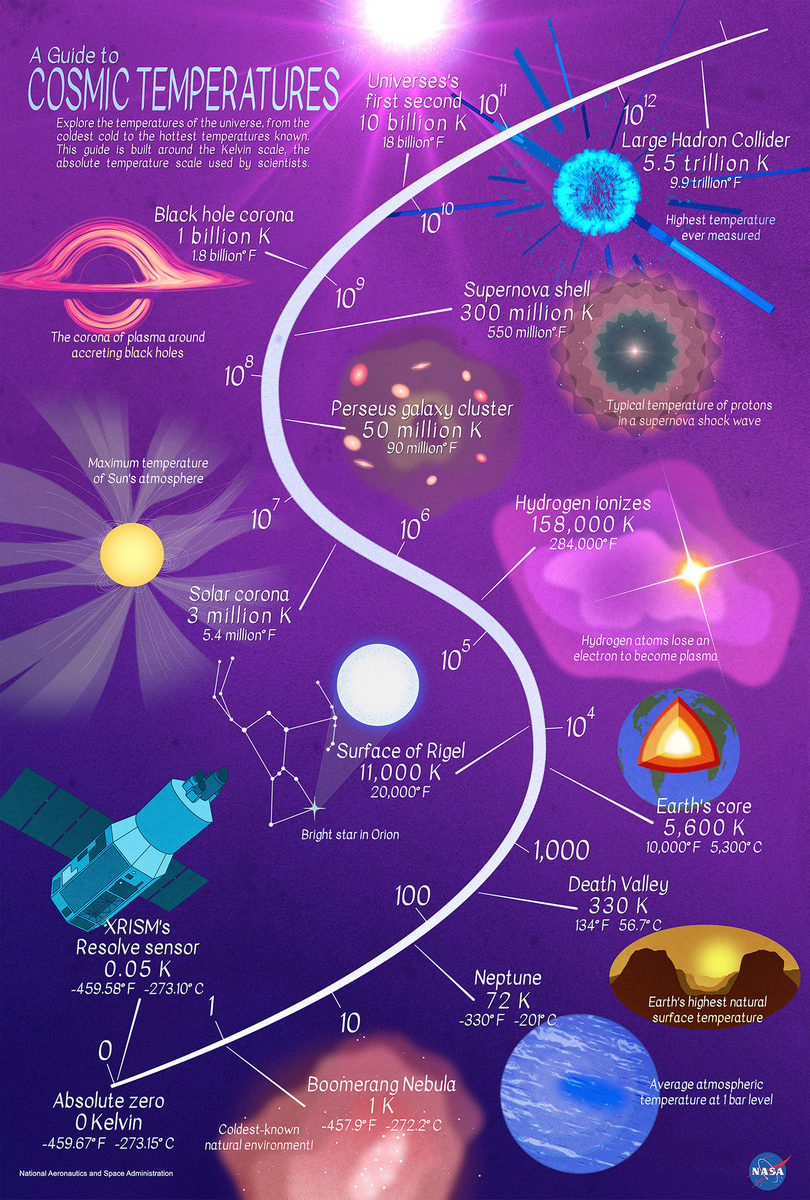
Japan’s XRISM (X-ray Imaging and Spectroscopy Mission, pronounced “crism”) observatory, which is expected to launch on August 25, will provide an unprecedented view of some of the hottest places in the universe. And it will do so with an instrument that has a temperature of near absolute zero.
Richard Kelly, NASA’s XRISM principal investigator at Goddard Space Flight Center, said:
“XRISM’S RESOLVE INSTRUMENT WILL ALLOW US TO LOOK INTO THE STRUCTURE OF COSMIC X-RAY SOURCES IN WAYS THAT HAVE NOT BEEN POSSIBLE BEFORE.”
Scientists expect many new insights into the hottest objects in the universe, which include exploding stars, black holes and the galaxies that feed off them, and clusters of galaxies.
Huge range of space temperatures

Credit: NASA Goddard Space Flight Center/Scott Wiesinger
A new NASA infographic illustrates the vast range of space temperatures. At the bottom of the scale is absolute zero Kelvin, or minus 273.15 degrees Celsius.
The detector of XRISM’s Resolve instrument has a temperature of just 0.05 K. This is 20 times colder than the Boomerang Nebula – the coldest known natural environment – and about 50 times colder than the temperature of deep space, which is heated only by the oldest light in the universe, the cosmic microwave background.
Resolve by XRISM
The instrument, a collaboration between NASA and the Japan Aerospace Exploration Agency (JAXA), must be kept so cold because it works by measuring the slight temperature rise that occurs when X-rays hit its detector.
This information creates a picture of how bright the source is at different X-ray energies (the equivalent of the colors of visible light) and allows astronomers to identify chemical elements by their unique X-ray fingerprints, called spectra.
Brian Williams, NASA XRISM project scientist at Goddard, said:
“WITH CURRENT INSTRUMENTS, WE CAN ONLY SEE THESE FINGERPRINTS IN A RELATIVELY BLURRY WAY. RESOLVE WILL EFFECTIVELY GIVE X-RAY ASTROPHYSICS A SPECTROMETER WITH A MAGNIFYING GLASS.”
Another XRISM instrument called Xtend, developed by JAXA and Japanese universities, is an X-ray camera that will perform simultaneous observations with Resolve, providing additional information. Both instruments are based on two identical X-ray mirrors developed at Goddard.








